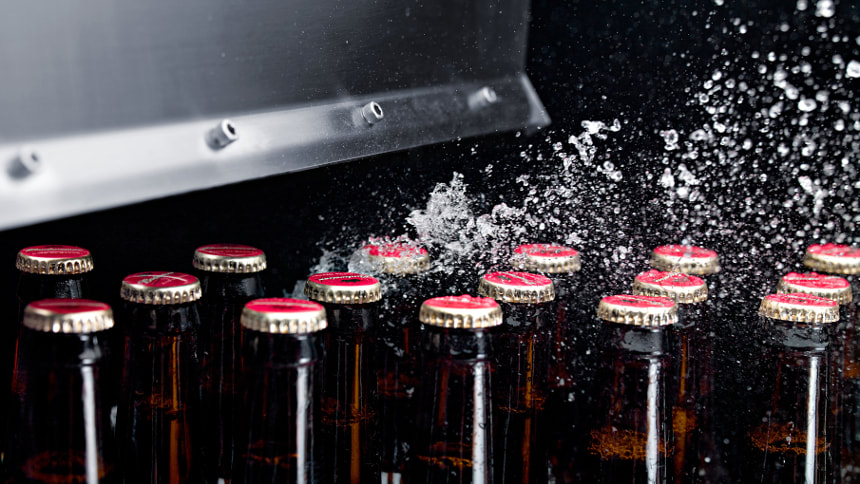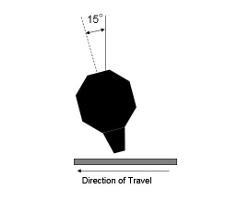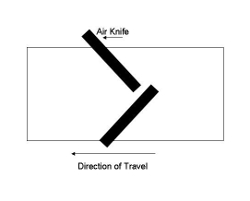|
Air knives are used in many industries to remove unwanted materials from processes. This can range from blowing water off of bottles in a bottling facility to removing cooling fluid in a metal rolling plant to removing crumbs from a bakery conveyor system. While the use of air knives for blow-off is widespread, so are the errors in setup that cause ineffective or inefficient operation. In this article we will review some of the fundamentals of implementing an effective blow-off system.
Choosing between Air Nozzles and Air Knifes
There are two ways to deliver the air in a blow-off system – an air knife or an air nozzle:
Positioning Air Knives and Air Nozzles
There are several dimensions to air knife positioning. Firstly, the air knife or nozzle should be placed as close as possible to the target object. Efficiency decreases sharply as distance increases between the air knife and the object; the same is true with air nozzles, although to a lesser extent.
Another aspect of positioning relates to two angles, the angle of attack and the sweep angle.
Sizing an Air Knife
When sizing an air knife or considering the number of nozzles it is important to take the sweep angle into consideration. The sweep angle means that the air knife’s actual length could be much longer than the height or width of the object being processed. Correctly sizing the air knives is important because the length of air knife or number of nozzles is a determining factor for the size of blower required
Choosing the Right Blower
Once you have determined the total length of air knife and, if necessary, the number of nozzles required the blower can be sized. Choosing a blower that is undersized is a common mistake. A good rule of thumb to follow is 10 CFM for every inch of air knife and 30 CFM for every nozzle to ensure effective blow-off. These values can change with the width of the air knife outlet gap or the diameter of the nozzle.
Although the concept of blow-off is a simple one, in practice blow-off systems are commonly designed and implemented without using best practices. STANMECH Technologies would be happy to discuss your blow-off challenges and make sure you get the best system for your application and budget.
Recommended Reading
Originally published: 10/22/2014
Comments are closed.
|
|
STANMECH Technologies Inc.
944 Zelco Drive Burlington ON L7L 4Y3 | 1-888-438-6324 | [email protected] Terms of Use Privacy Terms and Conditions of Sale Warranty Policies |
|
Proud Member of:




